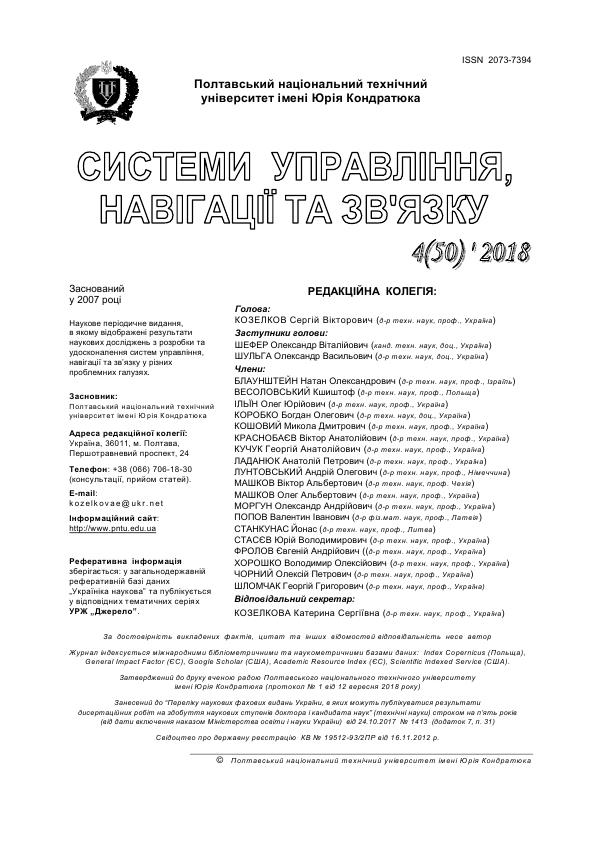THE METHOD OF HIERARCHICAL INFERENCE IN THE KNOWLEDGE BASE OF THE INFORMATION CONTROL SYSTEM IN THE "ENTERPRISE 2.0" PARADIGM
DOI:
https://doi.org/10.26906/SUNZ.2018.4.086Keywords:
paradigm "Enterprise 20"; Markov Logical Networks; temporal rules; logical conclusion; event logAbstract
The subject matter of the article is the process of using knowledge within the framework of the Enterprise for Enterprise 2.0 Paradigm, which involves the creation of complex management objects. The goal is to develop a hierarchical output method based on the temporal dependencies in the knowledge base to construct a set of possible action sequences in the current state of the control object at different levels of the organizational hierarchy of the enterprise. Tasks: to develop a hierarchy of context-oriented temporal dependencies for representing knowledge about the behavior of the control object at different levels of the organizational hierarchy; develop a method of probabilistic hierarchical output in the knowledge base based on information about the behavior of the control object in the form of event sequences. The methods used are: methods for determining the rules weights in the Markov logical network, the methods of output based on the representation of knowledge in the Markov logical network. The following results were obtained. Temporal rules are assigned that bind the event attributes of the control object's log. A hierarchy of such rules is formed based on grouping according to certain event attributes. The method of probabilistic hierarchical output is developed, which uses temporal rules for generating valid sequences of execution of actions at the appropriate level of the hierarchy. Conclusions. The scientific novelty of the results obtained is as follows: a model of the hierarchical representation of temporal dependencies in the form of rules for the successive actions on the control object and generalizing rules for the implementation of targeted actions is developed. The developed representation allows to detail the knowledge about the behavior of the control object for different levels of the organizational hierarchy and thus increase the efficiency of enterprise management. A method of hierarchical conclusion is proposed in the enterprise knowledge base in the Enterprise 2.0 paradigm. The method involves the formation of a hierarchy of ordered probabilities of possible variants of the predicted behavior of the control object. The method allows to increase the efficiency of enterprise management by choosing from the subset the most probable behavior with a given level of detail for the control object.Downloads
References
Vom Brocke, J. (2015). Handbook on Business Process Management 1. Introduction, Methods, and Information Systems. Springer-Verlag Berlin Heidelberg, p. 709 doi:10.1007/978-3-642-45100-3
Kalynychenko, O., Chalyi, S., Bodyanskiy, Y., Golian, V., Golian, N. (2013, September). Implementation of search mechanism for implicit dependences in process mining. 2013 IEEE 7th International Conference on Intelligent Data Acquisition and Advanced Computing Systems (IDAACS). Institute of Electrical and Electronics Engineers (IEEE). Available: https://doi.org/10.1109/idaacs.2013.6662
Shin J., Wu S., Wang F., De Sa C. Zhang С, R´e С. (2015). Incremental Knowledge Base Construction Using DeepDive. 41 th International Conference on Very Large Data Bases (VLDB). Vol. 8(11).
Niu F., Zhang C., Re C. (2012). DeepDive: Web-scale Knowledge-base Construction using Statistical Learning and Inference. VLDS, 25–28.
Van der Aalst, W. M. P. (2011). Process Mining: Discovery, Conformance and Enhancement of Business Processes. Springer Berlin Heidelberg, p 352 . doi:10.1007/978-3-642-19345-3
Van der Aalst, W. M. P. (2014). Process Mining in the Large. A Tutorial. Business Intelligence. Springer Science + Business Media, 33–76. doi:10.1007/978-3-319-05461-2_2
Chalyi S., Levykin I., Petrychenko A. and Bogatov I. (2018). Causality-based model checking in business process management tasks. Proc. IEEE 9th International Conference on Dependable Systems, Services and Technologies DESSERT’2018. Ukraine, Kyiv, May 24-27, 478 – 483.
Levykin V., Chala O. (2018). Method of automated construction and expansion of the knowledge base of the business process management system. EUREKA: Physics and Engineering, 4, 29-35.
Richardson, M., Domingos, P. (2006). Markov logic networks. Machine Learning, 62 (1-2), 107–136. doi: https://doi.org/10.1007/s10994-006-5833-1.
Singla, P., Domingos, P. (2005). Discriminative Training of Markov Logic Networks. Proceedings of the 20th national conference on Artificial intelligence.
Lowd D., Domingos P. (2007). Efficient weight learning for Markov logic networks. European Conference on Principles of Data Mining and Knowledge Discovery. Knowledge discovery in databases: PKDD 2007.




